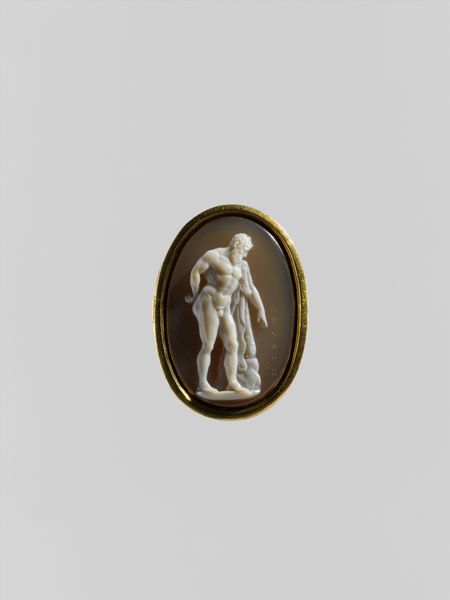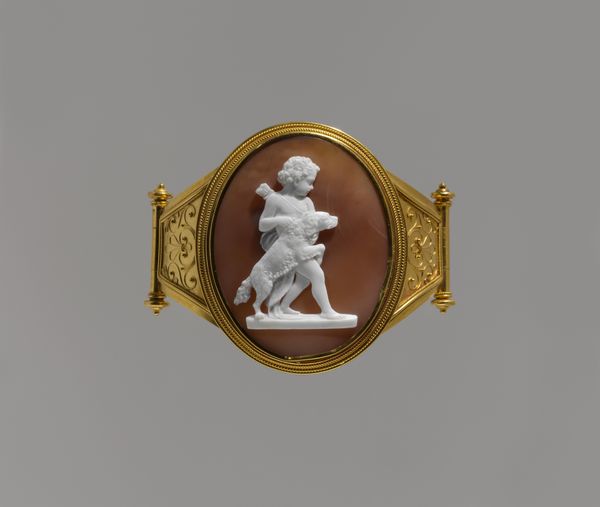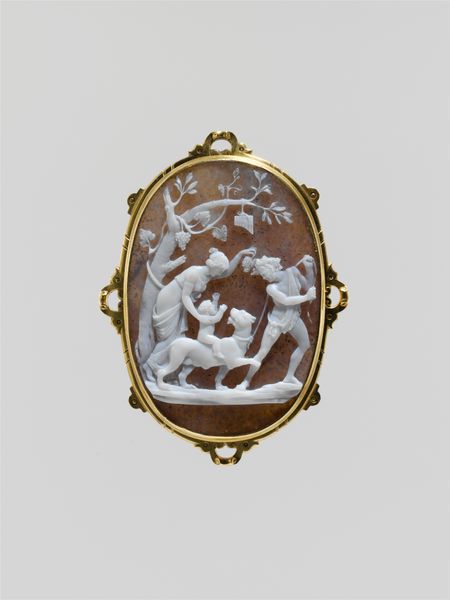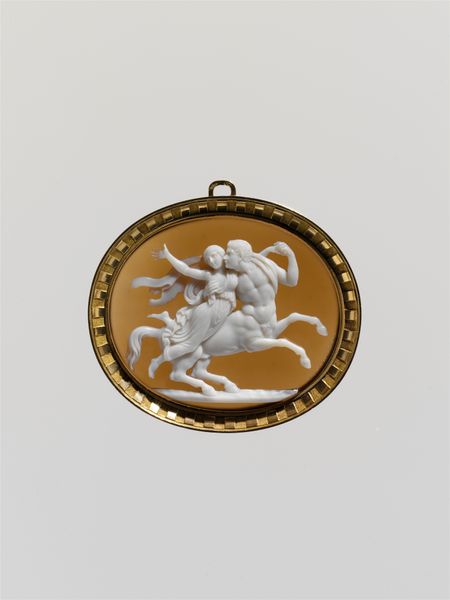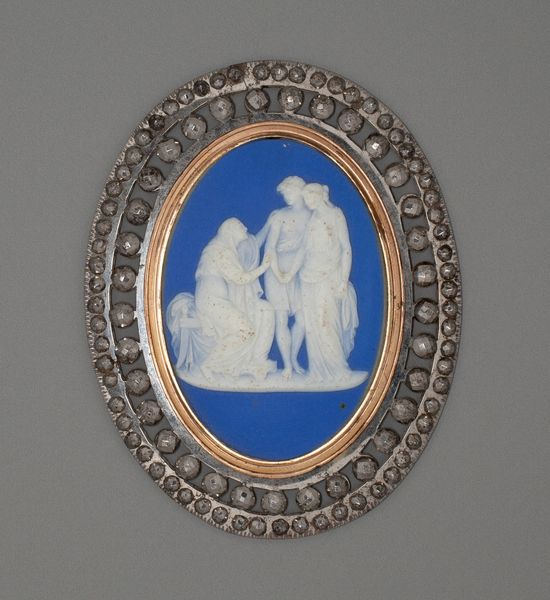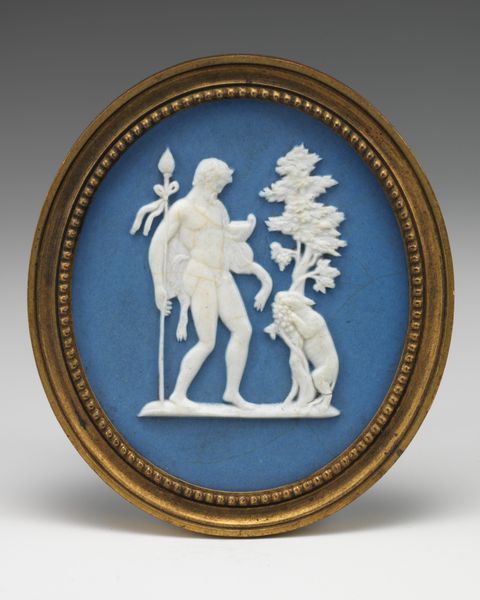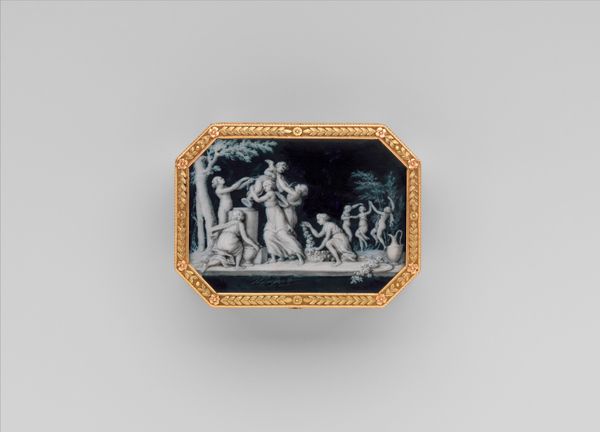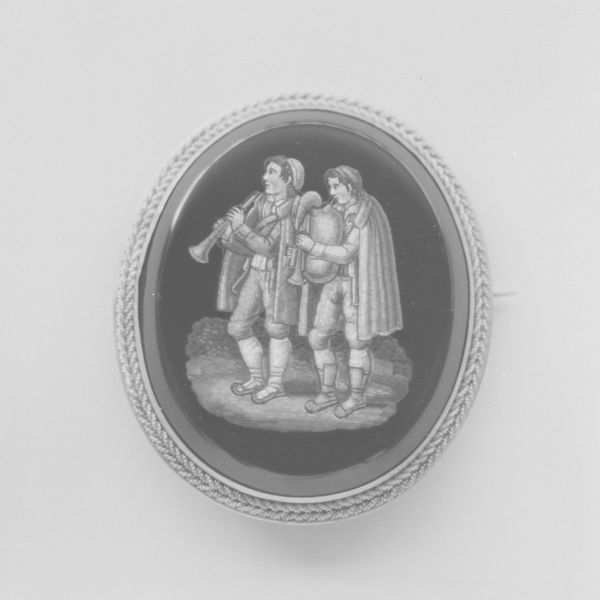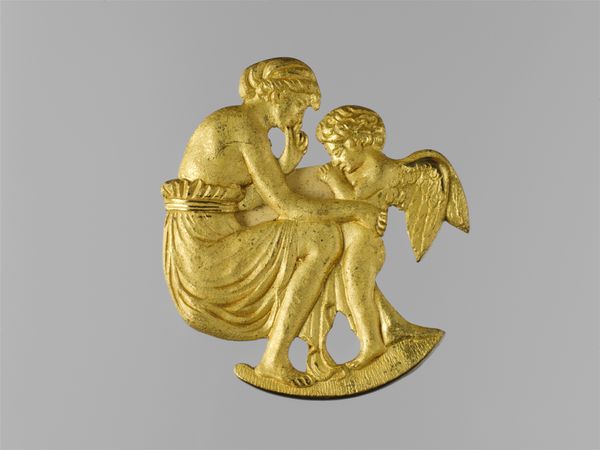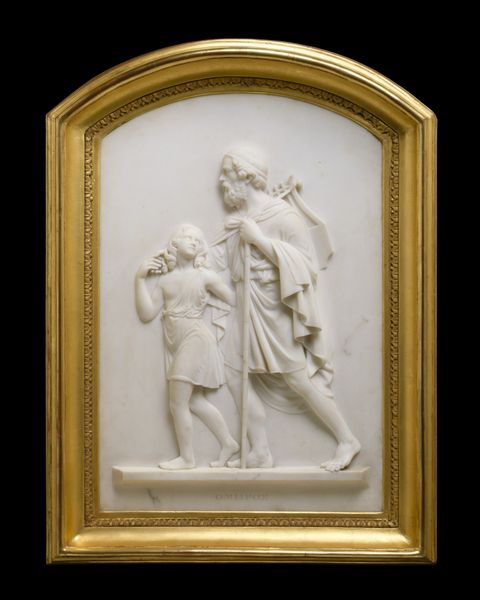
Priam Supplicating Achilles for the Body of Hector 1810 - 1830
0:00
0:00
intaglio, sculpture
#
neoclacissism
#
intaglio
#
sculptural image
#
framed image
#
sculpture
#
men
#
decorative-art
Dimensions: Overall (in setting): 1 15/16 x 2 1/4 in. (4.9 x 5.7 cm); visible cameo, overall: 1 5/8 x 1 7/8 x 7/16 in. (4.1 x 4.7 x 1.1 cm), 40.8 x 47.4 x 11.4 mm
Copyright: Public Domain
Giuseppe Girometti created this cameo depicting Priam begging Achilles for Hector's body sometime before his death in 1851. We see this iconic scene from Homer's Iliad immortalized here in miniature. The image creates meaning through its visual codes referencing classical antiquity. In nineteenth-century Europe, there was a fascination with Greece and Rome. Artists turned to classical literature for subject matter, drawing on its prestige to elevate their own work and connect it to a perceived golden age. Institutions like art academies reinforced these values, promoting classical ideals of beauty, heroism, and morality. This cameo, therefore, speaks to the Neoclassical movement's reverence for the art and culture of antiquity. While seemingly conservative in its aesthetic, it reflects the social conditions of its time. A piece like this would have been widely admired, signaling the owner's classical education and good taste. To understand it better, we can research the historical context, examining the influence of classical literature and the role of institutions in promoting specific artistic styles. Ultimately, we can recognize how its meaning is contingent on these factors.
Comments
No comments
Be the first to comment and join the conversation on the ultimate creative platform.
